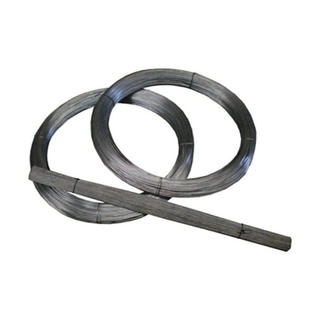Black Annealed Wire is a soft and flexible low-carbon steel wire that undergoes an annealing process, giving it a distinctive dark oxide surface. The annealing involves heating the wire to a specific temperature and then slowly cooling it, which reduces hardness while improving ductility and workability. This makes the wire easy to bend, twist, and cut without breaking, ideal for applications requiring pliability.
Commonly used in binding, baling, and general fastening purposes, black annealed wire is widely applied in agriculture, construction, and packaging industries. Its corrosion-resistant oxide layer provides moderate protection, though it is less durable than galvanized wire in harsh environments. The wire is often chosen for tying rebar, securing hay bales, crafting, and DIY projects due to its ease of handling.
Available in various gauges and coil sizes, black annealed wire balances strength and flexibility, making it a cost-effective solution for light to medium-duty tasks. Its versatility and user-friendly properties ensure widespread use in both industrial and household applications where malleability is prioritized over high tensile strength.
What is the purpose of annealed wire?
Annealed wire is heat-treated to increase ductility and reduce hardness, making it softer and more pliable for applications requiring flexibility and ease of use. The annealing process involves heating the wire to a specific temperature and then slowly cooling it, which relieves internal stresses and improves workability. This type of wire is commonly used in binding, tying, and crafting, where bending and shaping without breaking are essential. Its malleability makes it ideal for securing rebar in construction, bundling materials in agriculture, and creating handmade products like wire sculptures. Unlike hard-drawn wire, annealed wire is less likely to crack or snap under stress, ensuring reliable performance in repetitive tasks. The enhanced flexibility also allows for tighter knots and more secure fastenings, making it a preferred choice for both industrial and DIY projects where precision and durability are required.
What is the process of black annealing?
Black annealing is a heat treatment process that involves heating steel wire in a controlled, oxygen-free environment to prevent oxidation, resulting in a dark oxide layer on the surface. The wire is heated to temperatures between 600°C and 900°C, depending on the material, and then cooled slowly to achieve desired softness and flexibility. Unlike bright annealing, which uses a protective atmosphere to maintain a shiny surface, black annealing allows a thin oxide scale to form, giving the wire its characteristic dark finish. This process improves the wire's mechanical properties, such as ductility and tensile strength, while reducing brittleness. Black annealed wire is commonly used in construction, fencing, and binding applications where surface appearance is less critical than performance. The oxide layer also provides mild corrosion resistance, making it suitable for indoor and outdoor use in non-harsh environments.
Industrial Applications of Annealed Binding Wire
Annealed binding wire is widely used in industries requiring secure, flexible fastening solutions. In construction, it ties rebar in concrete structures, ensuring stability during curing and preventing displacement. The wire's softness allows workers to twist and knot it tightly without tools, speeding up assembly. In agriculture, it bundles crops, secures fencing, and repairs equipment due to its resistance to snapping under tension. Manufacturing and logistics rely on annealed wire for packing and baling materials like metal scraps, textiles, and paper products. Its malleability ensures consistent performance in automated machinery, reducing downtime for adjustments. Additionally, the wire is used in crafts and DIY projects, where its ease of shaping is ideal for creating durable, custom designs. The combination of strength, flexibility, and corrosion resistance makes annealed binding wire indispensable across multiple sectors.


